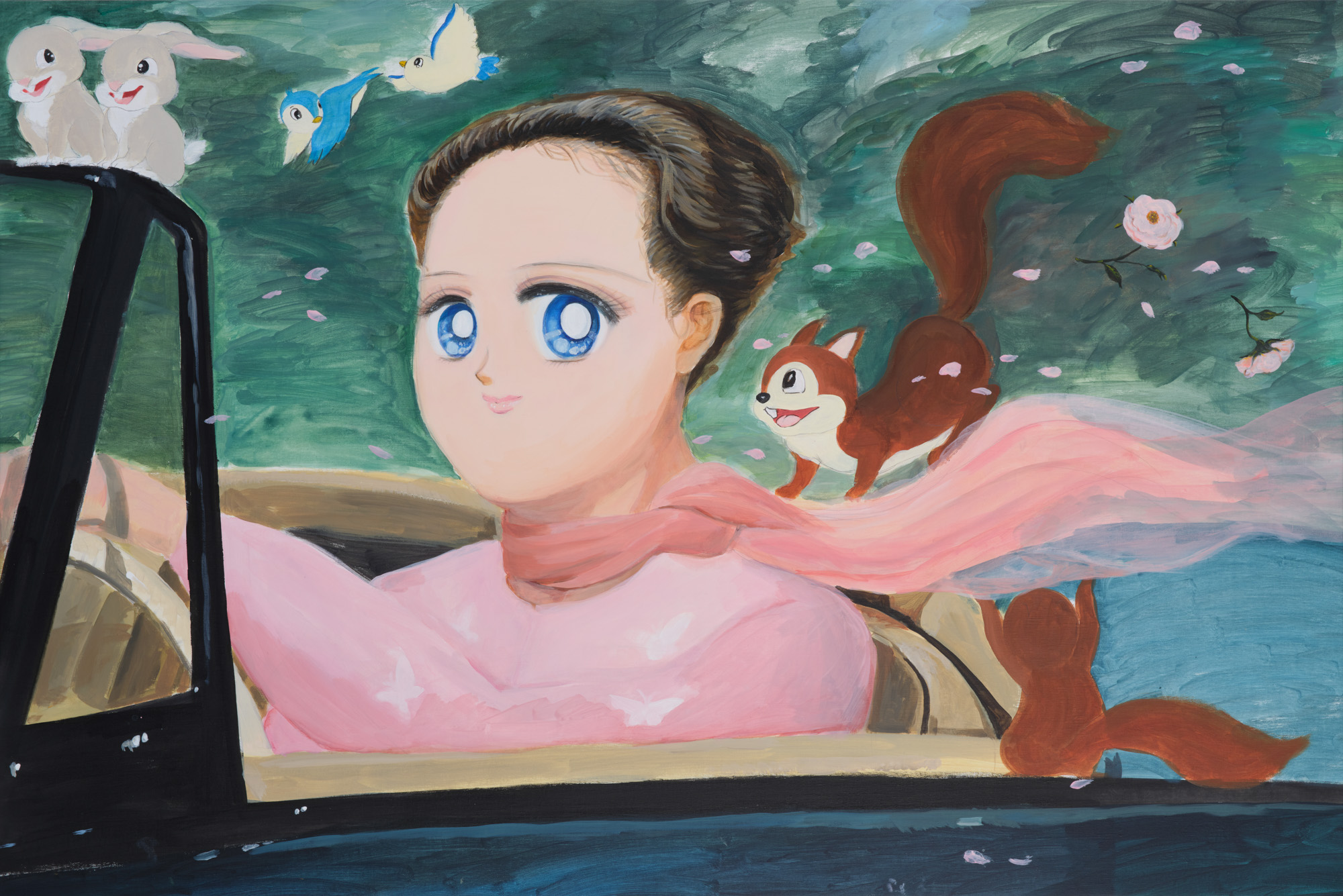125 Up Close: Liu Yin
By Cassie Liu

LIU YIN, Madeleine Driving, 2021, acrylic on canvas, 152 × 101.5 cm. Photo by South Ho. Courtesy the artist and Mine Project, Hong Kong.

LIU YIN, Madeleine, 2021, acrylic on canvas, 85 × 60 cm. Photo by South Ho. Courtesy the artist and Mine Project, Hong Kong.
Resembling manga characters with sparkling, oversize eyes and kawaii smiles, the protagonists in Liu Yin’s paintings are often avatars for public figures, national leaders, and magazine models. Madeleine, the star of Liu’s newly crafted story, told through a painting series, is an AI bot in human skin, with hair swept back in an Edwardian pompadour roll or perhaps a Maoist quiff. In their past life, Madeleine was “an important, powerful, and influential man in history” who was determined to live again in a female body.
Their reincarnation is portrayed in The Birth of Madeleine (2021), a parody of Sandro Botticelli’s iconic painting as (1485–86). Surrounded by fluttering, pink peaches that replace the posse of deities in the original composition, Madeleine emerges as a blushing goddess, demurely avoiding the audience’s gaze. In pursuit of a cute and feminine quality, they named themselves after a type of small, French cake. Madeleine (2021) features the character holding the dessert, like in an advertising campaign, under a floating, golden banner inscribed with their moniker. Elsewhere in the series, Madeleine Driving (2021) depicts them in a convertible, like American actress Grace Kelly in her 1955 romantic thriller To Catch a Thief, expressing their aspiration to become the film’s glamorous, stately beauty.
In a 2019 painting, Madeleine sits on a beach and gazes at the sea, contemplating the mission of their new life. Liu imagines, in their previous life, Madeleine would have also reflected by the water, but we would have never known if this figure was strategizing for more power and influence or agonizing over society’s expectations of men. The story of Madeleine’s rebirth not only gives them a chance at self- liberation, but also comments on the legitimacy of the intimate, personal thoughts that lurk beneath performances of stereotypical masculinity.
.jpg)






